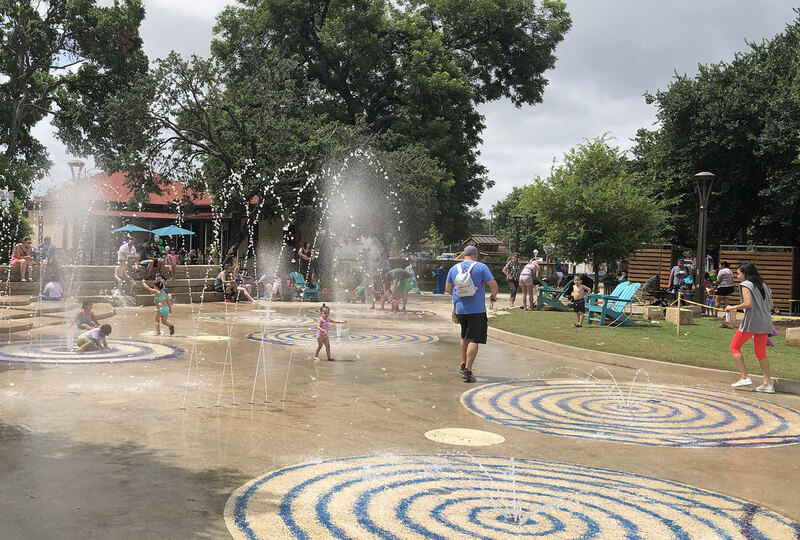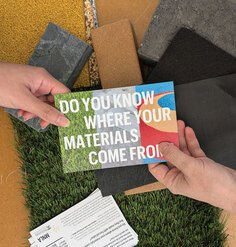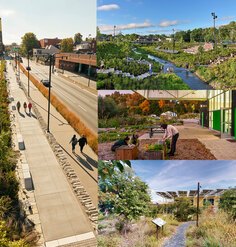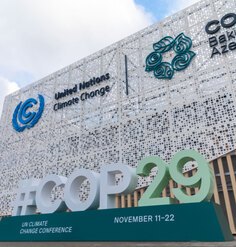From the Field: Challenging Paradigms
By Yalcin Yildirim, PhD Candidate and 2019 CSI Research Assistant at the University of Texas at Arlington

Environmental and social resiliency framed the post-occupancy evaluation narrative for our research team at the University of Texas at Arlington for the 2019 LAF Case Study Investigation program. The team includes CSI Fellow Adjunct Assistant Professor Amanda Aman and research assistant Yalcin Yildirim, PhD Candidate, in addition to the firm liaisons, Michael Robinson (SWA) and Amy Mitchell (MIG, Inc.).
Our team has been working to quantify performative benefits through the lens of resiliency for two landscape projects: Buffalo Bayou Park in Houston, Texas, designed by SWA, and Yanaguana Garden in San Antonio, Texas, designed by MIG, Inc. Buffalo Bayou Park, an urban green space located upstream of downtown Houston, is a precedent for resilient open-space design, planning, and operations in climate-sensitive and flood-prone coastal areas in an age of accelerated climate change with devastating potential impacts. Yanaguana Garden, the first phase of implementation for the Hemisfair Park Area Master Plan, is a series of active and passive play spaces designed for people of all ages, abilities, and backgrounds.
With regard to resilience, the design for Buffalo Bayou Park sought to mitigate seasonal and catastrophic flooding events while also restoring ecologies and systems, and simplifying and streamlining maintenance procedures. One of my research team’s methods involved working closely with the firm liaison to understand the various bayou slope stabilization techniques that were both considered and constructed concerning flood control, given that the site was designed to flood multiple times each year. We also worked with the Harris County Flood Control District to determine the repair costs for the constructed stabilization techniques that were less effective in addition to those that were highly effective. My team mapped the locations of each employed technique in addition to all repair locations and then analyzed their performance relative to the initial investment and implementation and repair costs. This method allowed us to understand the collective resiliency of these techniques as a system to better inform the design of landscapes laced with the need for flood control.
For Yanaguana Garden, we utilized the System for Observing Play and Leisure Activity in Youth (SOPLAY) in addition to a user survey designed by our research team in order to observe and catalog the diversity of users (gender, age, ethnicity, etc.), the types of play and activity levels, and the equitability and accessibility of the site and play equipment. A major goal of the project was to design and facilitate play spaces that enabled users to interact with one another, particularly as new acquaintances, where play became the primary language, regardless of gender, age, and ethnicity. This approach was driven by a greater goal of social resilience where, when exposed to diversity through the lens of a common language of play, children and adults would be more likely to engage in these types of interactions outside of the park as well. The team observed new acquaintances being made through play in the Sand Play Area consistently, in addition to users of varying ages interacting and learning from one another in the Play Square.
While both of these projects had different goals overall, their commonalities existed within the design intent for resilience as both sought to challenge the paradigm of how these landscape typologies typically exist. A number of additional methods were quantified by the research team concerning resilience and can be found in the respective Methods documents. For Buffalo Bayou Park, we also quantified the cost and performance of site furnishings and fixtures for flood submersion and debris impact, in addition to the ecological function of the site as a pollinator corridor. For Yanaguana Garden, our team also quantified perceptions of the garden’s inclusivity, in addition to access to the garden from local neighborhoods. This collection of methods ultimately supports the initial design goals for both landscape projects.
CSI Team: Amanda Aman, AIA, & Yalcin Yidirim, University of Texas at Arlington
Projects: a) Yanaguana Garden, San Antonio, Texas & b) Buffalo Bayou Park Post-Harvey, Houston, Texas
Landscape Architect: a) MIG, Inc. & b) SWA Group
This CSI Participant update was written in July 2019.
Any opinions expressed in this article belong solely to the author. Their inclusion in this article does not reflect endorsement by LAF.











